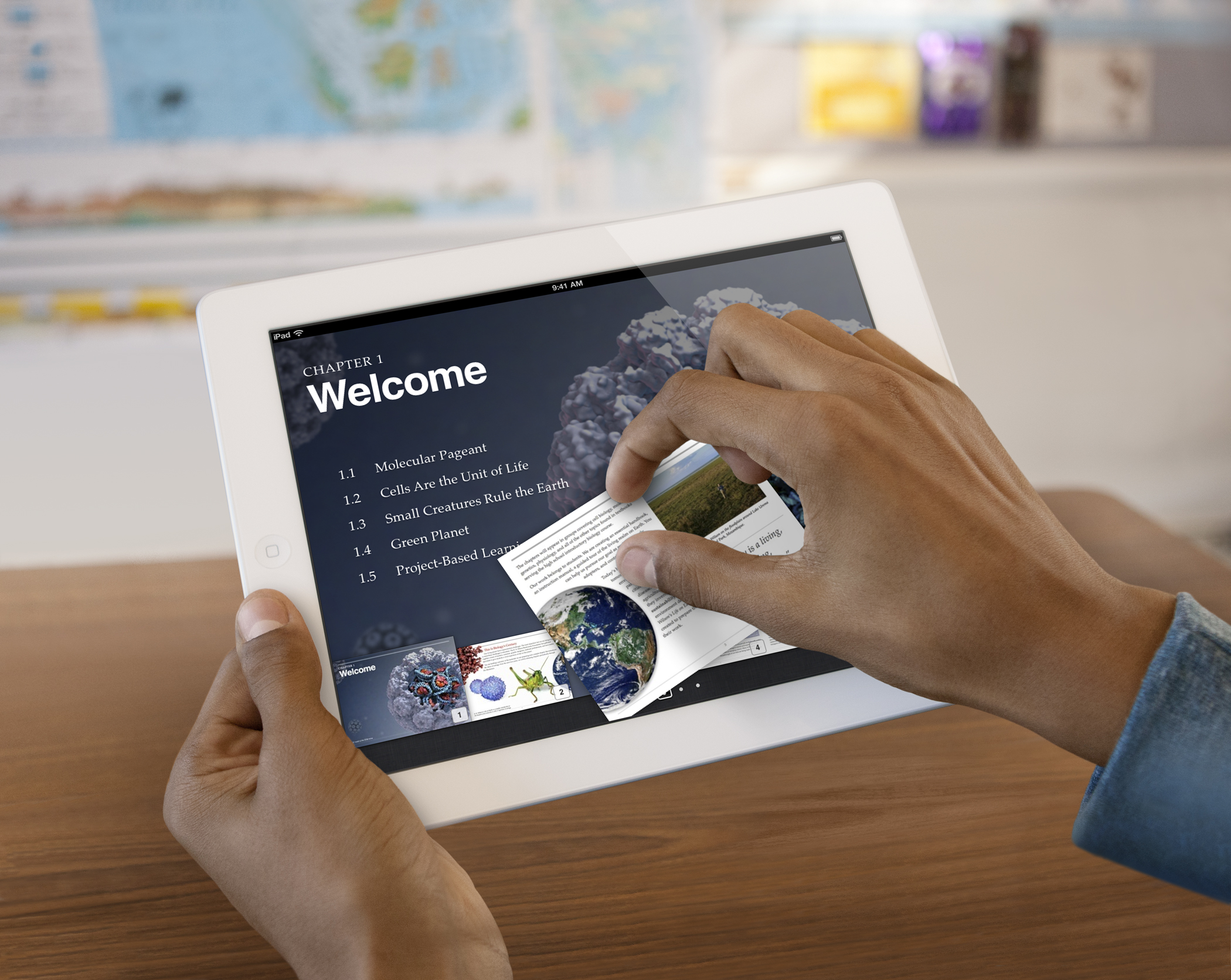By Stevie Schenk | sschenk@flagler.edu
Photo courtesy of Apple
Textbooks have always been a difficult part of classes for me. I’ve paid attention, taken notes, re-read material, but I always find the texts difficult to grasp. I’m not alone. Many students feel textbooks are necessary, but wish they could get more out of them. They don’t see the need for a book when a professor is just going to condense it into notes during class.
“I usually use about two out of four textbooks a semester and it’s mainly for brushing up before a test or quiz or midterm,” says Erica Carothers, a senior communication major focusing on public relations. “I don’t feel textbooks are necessary because we usually get notes on LMS (online Learning Management System) with teachers and that’s much more convenient.”
All of this is why I’m so excited that Apple has just entered the textbook arena—a bold move to engage students, increase excitement about material used in classes and to cut down on textbook prices. But it’s more than just price-cuts: the real focus is on content interaction.
“Education is deep in our DNA and it has been from the very beginning,” said Phil Schiller, Apple’s senior vice president of marketing.
iBooks 2 offers support for interactive textbooks and was released last week along with iBook Author for the Mac and the iTunes U app for iPad, iPhone and iPod Touch. Let’s look at the first two new developments individually.
The iBooks app has been a popular platform for publishers to release books to consumers since it was first released in March 2010. Many books have been available since, from bestsellers to free classics. Adding textbooks to this platform makes it easier for students and educators with iPads to access the material they need for class. These textbooks are available at a lower price than traditional textbooks and they are capable of interactive elements impossible in a traditional book. For example, within one of the first iBooks textbooks released, “Life on Earth,” there are movies, diagrams and pictures that come to life simply by tapping on them. The first time the user opens the textbook, he or she is greeted with a “trailer” exciting the user with previews to the content that awaits. These textbooks give students an entirely new way to interact with course material and the concepts the educator is teaching.
How can an educator harness this new ability within textbooks?
iBook Author. This is a Mac app that Apple released with iBooks 2. It allows users to create these interactive textbooks from a Mac computer, complete with picture galleries, in-text movies, interactive diagrams controlled by the reader and much more. This free app puts the power of this new textbook in the hands of educators, students, businesses, artists or anyone needing to create interactive media.
What does this mean for the future of education?
We are living in the information age. There is data that is free and available to the masses. But education has not always been so accessible. Apple wants to change that. With textbooks in iBooks and the ability to seek out rich data and publish it for use in the classroom, educators can breathe new life into the way their students learn. A professor teaching public relations can embed a video discussing how to create PR goals, objectives and tactics within a sidebar of the textbook the student need never leave the text to discover more about the topic. A math teacher can easily create a fun, interactive matching game in which the student matches a function with a graph. The possibilities for the educator to enrich the teaching process with the students are bound only by the creative capacity of that teacher.
What does this mean to me as a college student?
Another difficulty with traditional textbooks is the decision between purchasing a used book or a new one. When I purchased my textbook for my Principles of Wellness and Fitness class, the labs at the end of each chapter that are due in-class had been ripped out. Using these new iBooks textbooks, my professor could distribute the labs as word processing documents for the students to complete on iPad itself.
The downside to Apple’s new textbook initiative is that it forces students to get their hands on an iPad. Whether each student needs to buy an iPad or the school or university supplies them, iPad is the de facto medium to obtain these interactive textbooks. At $499 for the base model, students could have difficulty purchasing iPad.
The benefits iPad offers students can outweigh the cost as iPads replace laptops for many students. Browsing the Internet, checking email and writing papers are all easy on this device. And now, reading textbooks and studying for classes just got a lot easier, too.
Follow the links for more information on Apple in Education and a video about the new iBooks textbooks.



Be the first to comment on "Apple takes on textbooks"